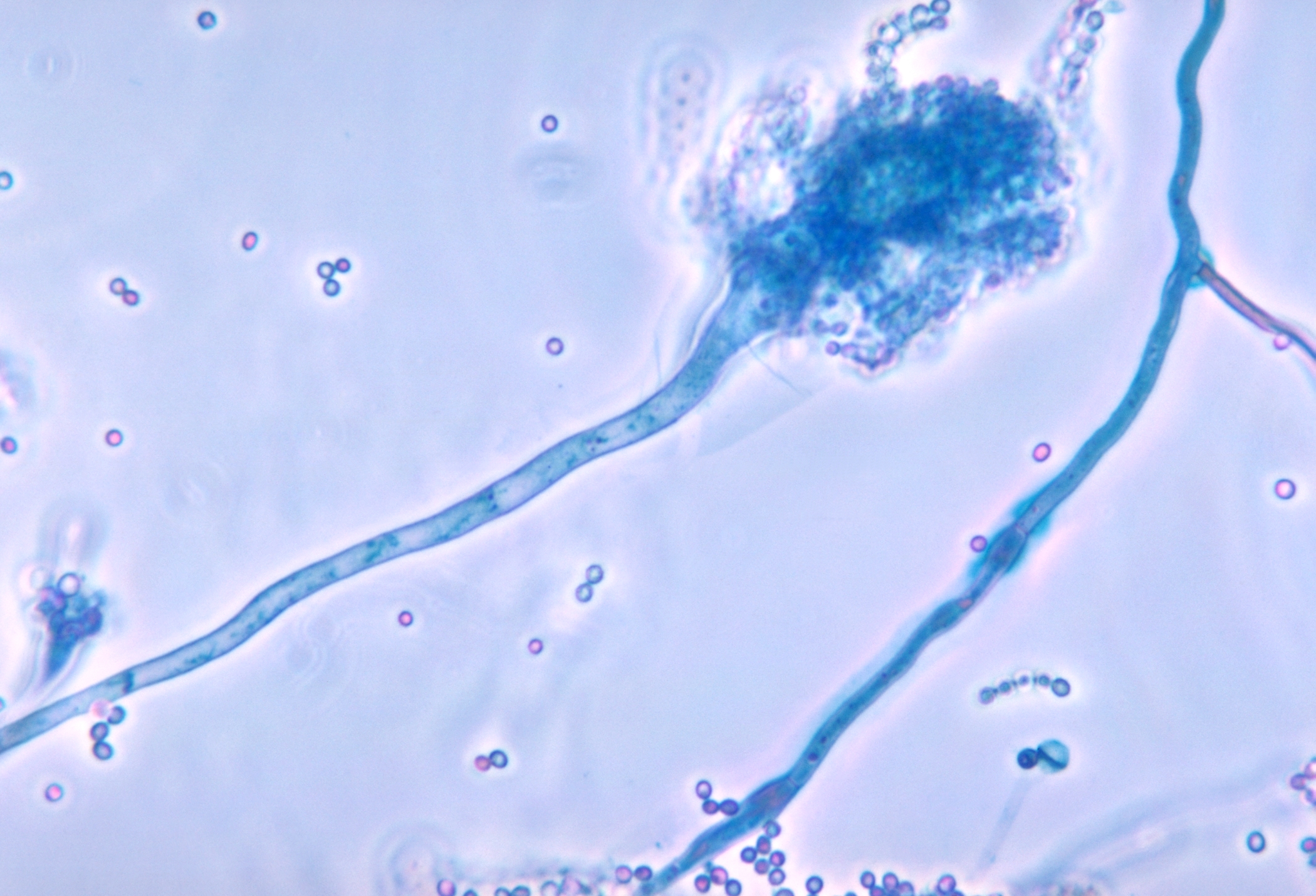|
Mold Health Issues
Mold health issues refer to the harmful health effects of molds ("moulds" in British English) and their mycotoxins. However, recent research has shown these adverse health effects are caused not exclusively by molds, but also other microbial agents and biotoxins associated with dampness, mold, and water-damaged buildings, such as gram-negative bacteria that produce endotoxins, as well as actinomycetes and their associated exotoxins. Approximately 47% of houses in the United States have substantial levels of mold, with over 85% of commercial and office buildings found to have water damage predictive of mold. As many as 21% of asthma cases may result from exposure to mold. Substantial and statistically significant increases in the risks of both respiratory infections and bronchitis have been associated with dampness in homes and the resulting mold. Molds and many related microbial agents are ubiquitous in the biosphere, and mold spores are a common component of household and workp ... [...More Info...] [...Related Items...] OR: [Wikipedia] [Google] [Baidu] |
Aspergillus Fumigatus 01
'''' () is a genus consisting of several hundred mold species found in various climates worldwide. ''Aspergillus'' was first catalogued in 1729 by the Italian priest and biologist Pier Antonio Micheli. Viewing the fungi under a microscope, Micheli was reminded of the shape of an ''aspergillum'' (holy water sprinkler), from Latin ''spargere'' (to sprinkle), and named the genus accordingly. Aspergillum is an asexual spore-forming structure common to all ''Aspergillus'' species; around one-third of species are also known to have a sexual stage. While some species of ''Aspergillus'' are known to cause fungal infections, others are of commercial importance. Taxonomy Species ''Aspergillus'' consists of 837 species of fungi. Growth and distribution ''Aspergillus'' is defined as a group of conidial fungi—that is, fungi in an asexual state. Some of them, however, are known to have a teleomorph (sexual state) in the Ascomycota. With DNA evidence, all members of the genus ' ... [...More Info...] [...Related Items...] OR: [Wikipedia] [Google] [Baidu] |
Dust
Dust is made of fine particles of solid matter. On Earth, it generally consists of particles in the atmosphere that come from various sources such as soil lifted by wind (an aeolian process), volcanic eruptions, and pollution. Dust in homes is composed of about 20–50% dead skin cells. The rest, and in offices, and other human environments is composed of small amounts of plant pollen, human hairs, animal fur, textile fibers, paper fibers, minerals from outdoor soil, burnt meteorite particles, and many other materials which may be found in the local environment. Atmospheric Atmospheric or wind-borne fugitive dust, also known as ''aeolian dust'', comes from arid and dry regions where high velocity winds are able to remove mostly silt-sized material, deflating susceptible surfaces. This includes areas where grazing, ploughing, vehicle use, and other human behaviors have further destabilized the land, though not all source areas have been largely affected by anthropogenic ... [...More Info...] [...Related Items...] OR: [Wikipedia] [Google] [Baidu] |
Penicillium
''Penicillium'' () is a genus of ascomycetous fungi that is part of the mycobiome of many species and is of major importance in the natural environment, in food spoilage, and in food and drug production. Some members of the genus produce penicillin, a molecule that is used as an antibiotic, which kills or stops the growth of certain kinds of bacteria. Other species are used in cheesemaking. According to the ''Dictionary of the Fungi'' (10th edition, 2008), the widespread genus contains over 300 species. Taxonomy The genus was first described in the scientific literature by Johann Heinrich Friedrich Link in his 1809 work ''Observationes in ordines plantarum naturales''; he wrote, "''Penicillium. Thallus e floccis caespitosis septatis simplicibus aut ramosis fertilibus erectis apice penicillatis''", where ''penicillatis'' means "having tufts of fine hair". Link included three species—'' P. candidum'', '' P. expansum'', and '' P. glaucum''—all of which produ ... [...More Info...] [...Related Items...] OR: [Wikipedia] [Google] [Baidu] |
Cladosporium
''Cladosporium'' is a genus of fungi including some of the most common indoor and outdoor molds. Species produce olive-green to brown or black colonies, and have dark-pigmented conidia that are formed in simple or branching chains. Many species of ''Cladosporium'' are commonly found on living and dead plant material. Some species are endophytes or plant pathogens, while others parasitize fungi. ''Cladosporium'' spores are wind-dispersed and they are often extremely abundant in outdoor air. Indoors ''Cladosporium'' species may grow on surfaces when moisture is present. '' Cladosporium fulvum'', cause of tomato leaf mould, has been an important genetic model, in that the genetics of host resistance are understood. In the 1960s, it was estimated that the genus ''Cladosporium'' contained around 500 plant-pathogenic and saprotrophic species, but this number has since been increased to over 772 species. The genus ''Cladosporium'' is very closely related to black yeasts in the order Do ... [...More Info...] [...Related Items...] OR: [Wikipedia] [Google] [Baidu] |



